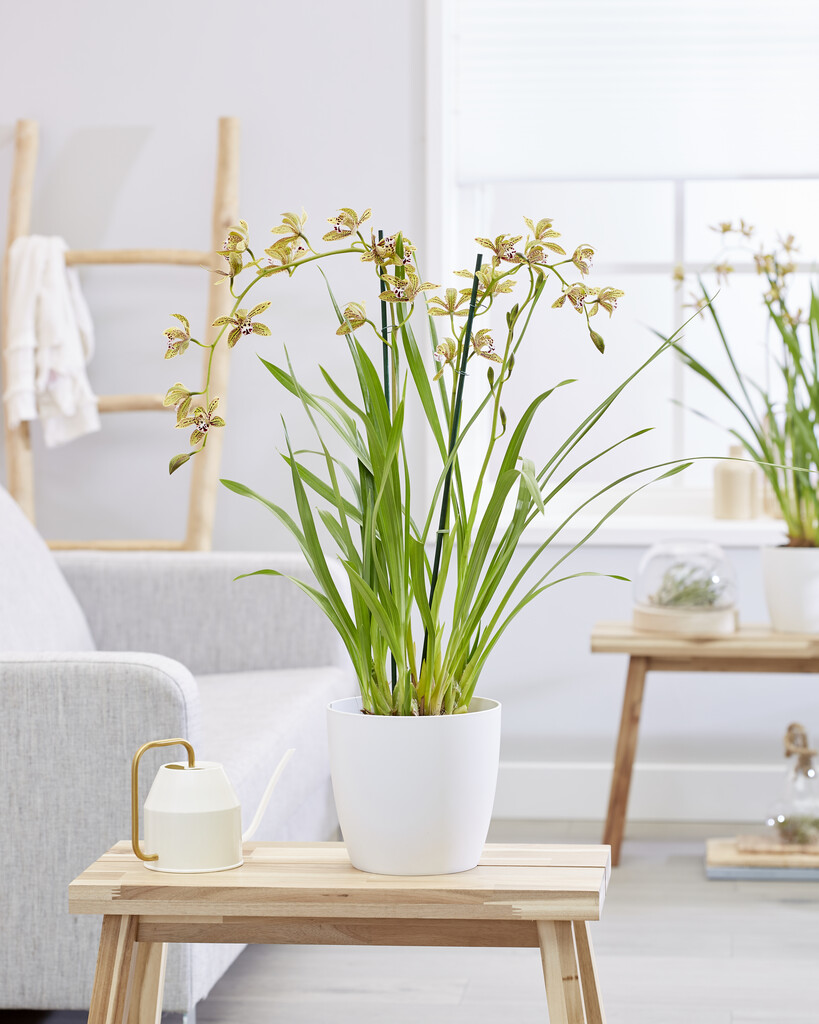Cymbidium erythraeum
An orchid naturally growing on trees or rocks, with tall, narrow, upright, bright green leaves, occasionally with dark spots. In autumn and winter, long arching stems carry about a dozen scented flowers, 8cm wide, with five narrow outer petals, green with dark red spots, and a tubular green centre with a white lip marked with dark red
Size
Ultimate height
0.5–1 metresTime to ultimate height
2–5 yearsUltimate spread
0.1–0.5 metresGrowing conditions
Moisture
Well–drainedpH
NeutralColour & scent
| Stem | Flower | Foliage | Fruit | |
| Spring | Green | |||
|---|---|---|---|---|
| Summer | Green | |||
| Autumn | Green Red White | Green | ||
| Winter | Green Red | Green |
Position
- Partial shade
Aspect
East–facing or West–facing
Exposure
Sheltered Hardiness
H1CBotanical details
- Family
- Orchidaceae
- Native to GB / Ireland
- No
- Foliage
- Evergreen
- Habit
- Clump forming
- Potentially harmful
- Skin allergen. Wear gloves and other protective equipment when handling
- Genus
Cymbidium are epiphytic, lithophytic or terrestrial orchids with prominent spherical to ovoid pseudobulbs, long linear leaves and fleshy white roots. Several long lasting showy flowers with a distinctive 3-lobed lip are borne on erect or arching flower spikes from the bases of the pseudobulbs
- Name status
Correct
- Plant range
- Himalaya SC China
How to grow
Cultivation
Requires day temperatures around 16°C and 10°C at night. Provide good light levels, but avoid direct sunlight. Pot firmly into epiphytic or terrestrial orchid compost, water thoroughly when compost is almost dry, allow to drain and use orchid fertiliser at every third watering. Water sparingly in winter. Place outside in dappled shade during the summer months to aid flower initiation. See cymbidium cultivation
Propagation
Propagate by division of pseudobulbs
Suggested planting locations and garden types
- Conservatory and greenhouse
Pruning
Cut flowered stems down to base
Pests
May be susceptible to aphids, glasshouse red spider mite, glasshouse whitefly and mealybugs
Diseases
Generally disease-free
Get involved
The Royal Horticultural Society is the UK’s leading gardening charity. We aim to enrich everyone’s life through plants, and make the UK a greener and more beautiful place.

